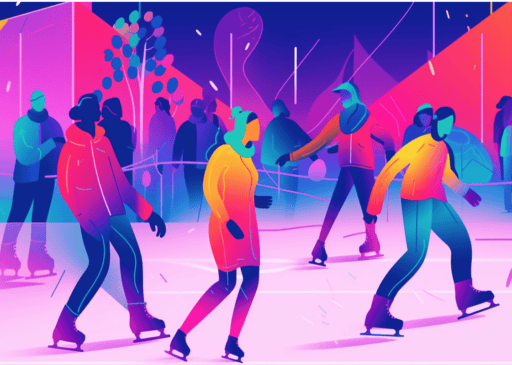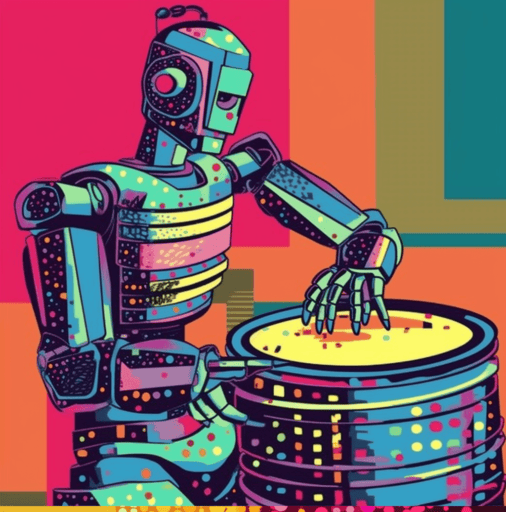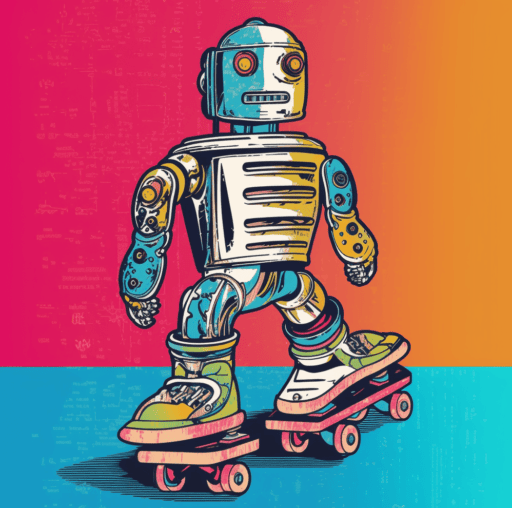In the age of information overload, finding what you need quickly and efficiently is more important than ever. OpenAI’s GPT technology has the potential to reduce friction between products and services, making it easier for individuals and businesses to find what they need. In this article, we’ll explore some specific examples of how OpenAI is already making a difference and what we can expect in the future.
Also:
- What is the value proposition of OpenAI’s GPT models?
- Exploring the Journey of the Swiss Economy in Adopting OpenAI’s ChatGPT and Co
What is Meant With Digital Friction?
Digital friction refers to any obstacles or inefficiencies that users may encounter when interacting with digital products or services. This can include things like slow-loading websites, confusing user interfaces, or difficult-to-navigate online forms.
Essentially, any aspect of a digital product or service that makes it more difficult or frustrating for users to achieve their desired outcome can be considered a form of digital friction. Reducing digital friction is a key goal of many businesses and organizations, as it can help to improve user satisfaction, drive conversions, and increase overall engagement with digital products and services.
But what about the friction that still exists when we have to Google something? Is that already a form of friction? I would argue yes. The bias of search engines towards paid results can also create friction for users seeking unbiased information. As a result, it has become common for users to search on Google and other websites separately to gain a comprehensive overview of products or services since search engines may not provide a complete picture. Having to enter a search query into a search engine manually is a form of friction that GPT can help eliminate.
Examples of How OpenAI GPT Reduces Digital Friction
With OpenAI GPT models, we can expect to see a future where we no longer have to search for information, but rather, it will be readily available to us through natural language conversations with our devices.
By leveraging the power of artificial intelligence, large generative language models are capable of reducing any friction between products and services, enabling users to access information quickly and effortlessly. The key is their ability to understand and reason over natural language.
- Users can communicate with GPT models using natural language and express their intent.
- GPT can go through large amounts of data and return an aggregated result
As we continue to see advancements in artificial intelligence, I believe we are on the cusp of a new era of technology that will redefine how we interact with the world around us. With OpenAI GPT, we can expect to see a future where accessing information is no longer a chore, but rather a seamless and intuitive experience. In the following, we will discuss four examples.
Also: 9 Powerful Applications of OpenAI’s ChatGPT and Davinci for Your Business

Customer Service ChatBots
Before OpenAI, chatbots were often limited in their ability to understand and respond to customer inquiries. They relied on keyword matching and pre-programmed responses, which could lead to frustration for customers who weren’t getting the help they needed. With OpenAI, chatbots can now use natural language processing to understand the context of a customer’s inquiry and provide more accurate and helpful responses. This reduces friction by speeding up the process of resolving customer issues and increasing customer satisfaction.
Businesses can benefit from OpenAI-powered chatbots by reducing the workload of customer service agents. With chatbots able to handle routine inquiries, agents can focus on more complex tasks that require human expertise. This results in a more efficient use of resources, allowing businesses to provide better service to their customers while maximizing their operational efficiency.
E-commerce Product Recommendations
In the past, product recommendations were often based on simple algorithms that looked at a customer’s browsing history or purchase history. However, these recommendations were often too simplistic and didn’t take into account a customer’s preferences or interests. With OpenAI, product recommendations can now be based on more complex algorithms that take into account a wider range of data, such as customer reviews and social media activity.
Furthermore, the recent release of ChatGPT plugins has enabled it to browse the web. This means that it can now take into account information from websites and aggregate the result. This allows ChatGPT to provide even more accurate and relevant recommendations to customers. In the future, there is a possibility that generative language models like ChatGPT can present a comprehensive view rather than a biased fragment.
Language Translation Services
In the past, language translation services often relied on machine translation, which had several limitations. Machine translation typically used rule-based algorithms that had difficulty with idiomatic expressions, cultural nuances, and colloquialisms. This often led to translations that were inaccurate or awkward, causing confusion or misunderstandings. In addition, machine translation was often unable to recognize and correct errors in the original text, leading to further inaccuracies in the translation.
However, with the advent of OpenAI and its advanced neural networks, language translation services can now produce more accurate and natural translations. OpenAI’s neural networks are trained on large amounts of data, allowing them to recognize and adapt to a wider range of linguistic features, such as idioms, slang, and regional variations. This makes the translations produced by OpenAI much more accurate and natural-sounding than those produced by traditional machine translation.
Improved translation capabilities can help to make content more widely accessible to people who speak different languages. This can be particularly beneficial for businesses and organizations that operate in multiple countries or regions, as it allows them to reach a wider audience and communicate more effectively with customers or stakeholders who may speak different languages.
Virtual Assistants
In the past, virtual assistants were often limited in their ability to understand and respond to users’ requests due to their reliance on pre-programmed responses. With OpenAI, virtual assistants can now use natural language processing to better understand and respond to users’ requests, reducing the friction of having to repeat requests or navigate through a confusing user interface. This can improve the user experience and increase engagement with the product or service.
With the increasing capabilities of large language models like OpenAI’s GPT, we are likely to see the development of digital assistants that can help us with a wide range of day-to-day tasks. These assistants could use natural language processing to understand our requests and preferences, and then use machine learning algorithms to generate personalized recommendations and solutions.
For example, a digital assistant based on GPT could help us to organize our schedules, book appointments, make travel arrangements, and even order groceries or meals. By reducing the friction associated with these tasks, these digital assistants could help us to save time and increase our overall productivity and efficiency.
Also: ChatGPT Style Guide: Understanding Voice and Tone Prompt Options for Engaging Conversations
Customized Content Creation
Creating high-quality content can be time-consuming and challenging, especially for businesses or individuals without extensive writing experience. With OpenAI, content creation can be made easier by providing users with AI-generated content suggestions or even full articles based on their desired topic or target audience. This is another example of how OpenAI can help reduce friction and streamline tasks, ultimately making it easier for individuals and businesses to succeed in today’s digital landscape.
With OpenAI, businesses and individuals can use AI-generated content to create highly customized products and services that stand out from the competition. For example, a t-shirt company could use AI-generated designs to create truly unique and personalized shirts for their customers. This not only reduces the time and effort required for design work, but also allows for a higher level of customization and uniqueness in the final product. This can help businesses differentiate themselves in crowded markets and appeal to customers looking for something truly one-of-a-kind.

Summary
The advancements in OpenAI technology will significantly impact the digital landscape by reducing friction between users and products/services. From customer service chatbots and e-commerce product recommendations to language translation services and content creation, OpenAI has provided new and innovative solutions to improve user experience and efficiency. And these are just a few examples. We are just beginning to understand the possibilities of OpenAI GPT to reduce friction in the digital world, and much more innovations can be expected in the coming years.
Things are already moving very fast. With the recent release of OpenAI’s ChatGPT plugins, users can now enjoy the benefits of AI-generated content and web browsing, further expanding the capabilities of digital assistants. As OpenAI continues to develop and refine its technology, we can expect to see even more exciting applications and use cases emerge, ultimately shaping the future of digital interactions.

Sources and Further Reading
TechCrunch – OpenAI connects ChatGPT to the internet.
Images created with Midjourney.
ChatGPT helped to revise this article.